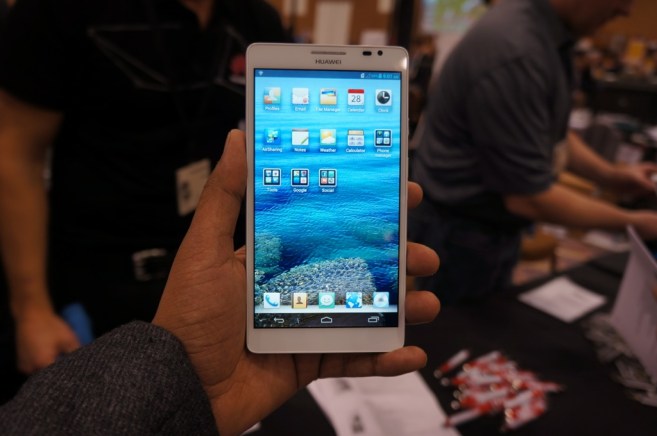
Huawei, you’ve successfully built the world’s largest smartphone with the 6.1-inch Ascend Mate. Congratulations?
[aditude-amp id="flyingcarpet" targeting='{"env":"staging","page_type":"article","post_id":600792,"post_type":"story","post_chan":"none","tags":null,"ai":false,"category":"none","all_categories":"business,mobile,","session":"B"}']This CES has been fairly quiet when it comes to new smartphone announcements, so Huawei’s reveal yesterday of the massive Ascend Mate was a nice little reminder of previous years. But after playing around with the phone for a few minutes, I can confirm that it’s about as silly as you’d imagine.
The Ascend Mate simply looks and feels massive. I can’t imagine anyone finding it comfortable enough to use as their daily phone (let alone fit it into their pocket).
AI Weekly
The must-read newsletter for AI and Big Data industry written by Khari Johnson, Kyle Wiggers, and Seth Colaner.
Included with VentureBeat Insider and VentureBeat VIP memberships.
I had similar initial reservations about Samsung’s Galaxy Note in 2011, but at 5.3-inches, at least it looked like a typical phone and fit into your pocket. Samsung also managed to make its successor, the Note II, thinner and lighter (while also squeezing in a slightly bigger screen).
Avoiding just about everything great about modern smartphone designs — light weight, thin frames, a focus on pragmatic features — the Ascend Mate simply seems to say, “Fuck you, I’m big.” That may not be the best way to market a phone.
Below, we’ve compared it to the iPhone 4, Nexus 4, and the iPad Mini. Not surprisingly, when placed against the iPad Mini, the Ascend Mate looks far more like a tablet than a phone.
Ultimately, I can sum up the way I feel about the Ascend Mate with my response to Huawei’s rep when I first held it. “No, just no.”
VentureBeat's mission is to be a digital town square for technical decision-makers to gain knowledge about transformative enterprise technology and transact. Learn More
